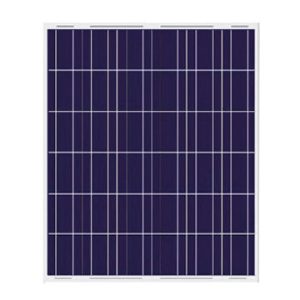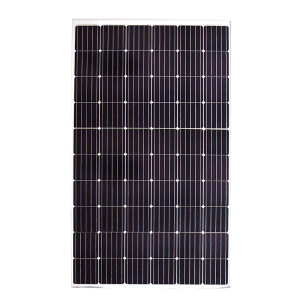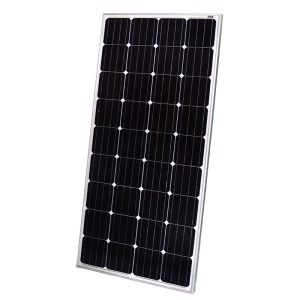Residential solar photovoltaic (PV) systems have seen tremendous growth over the past decade. Once an exotic technology limited to off-grid cabins and RVs, small rooftop solar arrays are now commonplace across suburban neighborhoods nationwide. The early “sweet spot” for home installations was often a 1.5-kilowatt system, comprising just 6–9 standard panels. But as solar incentives have evolved and PV panel efficiency has dramatically improved, what is now considered a typical system size has shifted upwards to the 3–10 kilowatt range.
Nonetheless, 1.5 kW remains a relevant benchmark when evaluating the potential of solar to offset household energy consumption. For homeowners with limited roof space or more modest energy needs, a 1.5kW solar system may meet their requirements with minimal fuss and expense. These small solar arrays continue to have applications for supplementary power generation, off-grid operations, or simply making a statement about sustainability.
What is a 1.5 kW solar system?
Put simply, a 1.5kW solar panel system has a direct current (DC) power output rated at 1500 watts under Standard Test Conditions. This equates to approximately 6–10 standard 60-cell or 72-cell solar panels, ranging from 165–270 watts each. Actual AC power production after inverting to alternating current will be 20–30% less, around 1.1–1.3 kW.
The physical size of a 1.5 kW solar array is typically about 10 square meters in total. So most suburban family homes have adequate horizontal or sloped roof space to accommodate such a system. The solar panels themselves measure approximately 1.6 by 1 meter, with aluminum framing adding slightly to the dimensions.
Rooftop installations need to factor in spacing between panels to prevent shading, generally with a gap of at least 0.3m between portrait-oriented panels. This spacing allows room for access and maintenance while permitting unobstructed sunshine throughout the day.
How Much Power Do 1.5kW Solar Systems Generate?
There are a wide range of variables that determine the actual solar energy harvest from a PV system, including:
- Location and average solar insolation
- Panel orientation and tilt angle
- Ambient temperature effects on panel efficiency
- Degree of shading from structures or vegetation
However, as a general guideline, a 1.5kW solar array will produce in the range of 4–7 kWh per day on average. This assumes a reasonably open site in a climate zone with good solar resources, such as the Sun Belt region, and a rooftop installation tilted 20–30 degrees facing a direction within 30 degrees of true south.
With this level of productivity, a 1.5 kW system yields enough solar electricity to offset around one-third of an average US household’s daily usage. So while not fully powering most homes, a PV array of this size makes a meaningful contribution to net energy needs and provides a solid foundation for adding more panels down the road.
What Are the Components in a 1.5kW Solar Panel System?
Grid-connected residential solar panel systems have a fairly straightforward configuration. The main hardware components include:
- Solar PV panels: crystalline silicon cells sealed in a weatherproof laminate and framed module.
- Racking: aluminum rails securely mount panels to the roof.
- Inverter: Converts the DC output of the panels to 120/240V AC power.
- Combiner box: Aggregates wiring from the arrays into a single input to the inverter.
- Disconnects and overcurrent devices: safety equipment and means of isolating the solar system.
- Monitoring hardware: meters and dashboards track system production.
Beyond the electrical gear tied to the panels themselves, a grid-connected system interfaces with the existing breaker panel to feed solar energy directly into home circuits. No battery storage is involved in grid-tied systems. Special safety considerations also come into play, discussed in more detail in the next section.
What Are the Key Safety Elements for a Grid-Tied 1.5kW Solar Installation?
Connecting a solar energy system to the utility grid requires special safety accommodations to protect people and equipment. Certified solar professionals are trained to properly incorporate critical protective elements like:
Rapid shutdown: local and remote controls that quickly de-energize panels when activated, as required by NEC 690.12.
Ground fault detection: monitors for potentially dangerous leakage current and disconnects the solar system as needed.
Arc fault circuit protection: detects unintended electrical arcs along wiring and disables solar output per NEC 690.11.
Utility disconnect: Isolates the house circuits from grid power for servicing the solar installation.
Lightning protection: surge suppression and grounding equipment to guard against lightning strikes.
These safety systems ensure seamless integration with the existing electrical infrastructure while containing any potential hazards from the solar PV array. Once incorporated by qualified installers, the protective equipment operates automatically in the background for years of trouble-free solar harvesting.
How Much Do 1.5kW Solar Panel Systems Cost?
The costs of solar panels, inverters, and other system components have fallen substantially from where they were even a few years ago. However, soft costs like permitting, labor, site survey fees, and financing costs still represent a major portion of the total expense. For a residential 1.5kW rooftop solar installation, today’s typical pricing is:
Equipment cost: $1.30–$1.80 per watt for panels, racking, inverters, and parts. So $1,950–$2,700 for a 1.5 kW system.
Soft costs: $1,000–$2,500 for non-equipment expenses like permitting, labor, and financing.
Total installed cost: $3,000–$5,000 before incentives. This works out to $2.00–3.30/watt.
Incentives can lop 35-75% off the sticker price with federal tax credits, state and local rebates, performance payments, and net metering bill savings. When factoring in these incentives, payback periods of 5 years or less are common for residential solar installations.
The Database of State Incentives for Renewables & Efficiency offers a summary of available solar incentives by location. Your jurisdiction likely offers at least one solar incentive program to reduce PV system costs.
What Are the Typical Applications for 1.5kW Solar Installations?
While once the “default” size for residential solar, 1.5kW systems now serve niche applications where higher solar harvest is not essential. Some common situations where a 1.5kW solar PV system meets needs include:
Smaller households: single- or dual-occupancy homes with relatively light energy usage. Surplus solar production offsets smaller bills.
Limited roof space: homes where shading, extensive rooftop HVAC, or architectural constraints restrict panel mounting zones.
Auxiliary power: off-grid cabins, RVs, boats, and sheds using solar as a secondary source alongside other generation.
Solar gateway: an initial foray into PV energy, allowing easy future expansion.
Statement of Sustainability: Demonstrating environmental commitment with a visible rooftop array.
While their heyday has passed, 1.5kW solar panel systems fill an enduring niche in renewable power generation. They continue to provide a starting point for households testing the solar waters or wanting to make a small dent in their energy consumption without going overboard. And as solar costs fall further, these mini-arrays become ever more accessible to homeowners across the country.



